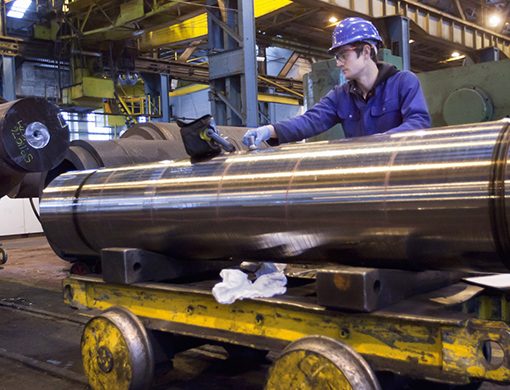Select the right alloy for your application and guarantee long-term performance
Many alloy families have been engineered to be versatile and are suitable for a wide range of applications. Some of these alloys are referred to as “universal,” which means the same material can be used for products from utensils to rivets. At first glance, it seems like choosing an alloy for a specific part should be easy, but it can be a complicated process—as anyone who has stared at a pile of data sheets knows all too well.
Begin by researching commonly available alloys, but keep in mind that a custom alloy might be needed to satisfy strict requirements. Review and rank desired properties, determine availability and cost, test and analyze, and consult with an expert.
Review and rank desired properties. What characteristics are most important? An ideal material will be able to easily handle the part’s everyday working conditions. Review the properties of base metals (e.g., Copper, Aluminum, Titanium, Nickel, Tin), and consider that many alloys have significant differences from these base elements. Also evaluate yield strength, impact strength, corrosion resistance, conductivity, weight, and compatibility with other materials.
Determine availability and cost. Strive to strike a balance between cost and quality. Will a proposed alloy be an economical choice for the planned run of parts? It’s important to remember, however, that low-cost materials sometimes can result in a shorter lifespan for the part. Also consider that some popular alloys are in high demand, which might affect availability, and that certain alloys are only available in specific forms, such as ingot, waffle, cake polished and unpolished shot, polished and unpolished cut pieces.
Test and analyze. Before scaling up manufacturing, it’s important to send the part through testing. Try to replicate actual conditions for the test, and review standards, such as the ASTM’s corrosion and wear standards, which provide guidance on the appropriate procedures for carrying out corrosion, wear, and abrasion tests. According to the ASTM, tests help evaluate how a material will behave under and/or resist conditions such as stress corrosion cracking, cavitation erosion, atmospheric corrosion, sliding and rolling friction, surface scratching and lubrication, and hydrogen embrittlement.
Ask the experts. Still stumped? For further questions or to address and understand issues encountered in the test phase, consult with a professional. Experienced alloy manufacturers have equipment available that can determine the cause of an alloy failure, and a metallurgist can make recommendations for improvement. Some manufacturers, such as Brooklyn, New York-based Belmont Metals have the capability to produce small order quantities for research and development purposes, which allows companies to test the feasibility of various alloy families. Once desired specifications are met, Belmont can then increase production.
Sometimes, a project’s needs extend beyond the capabilities of commonly available materials. In these instances, creating a custom alloy can help satisfy requirements. Among other issues, Belmont Metals’ custom alloy team has helped customers address lead-free regulations, the need for materials with greater ductility, hard-to-match colors, and casting failures.
Investing time and effort in carefully choosing or creating an alloy will extend the life of a part and allow it to achieve optimal results while in operation.

